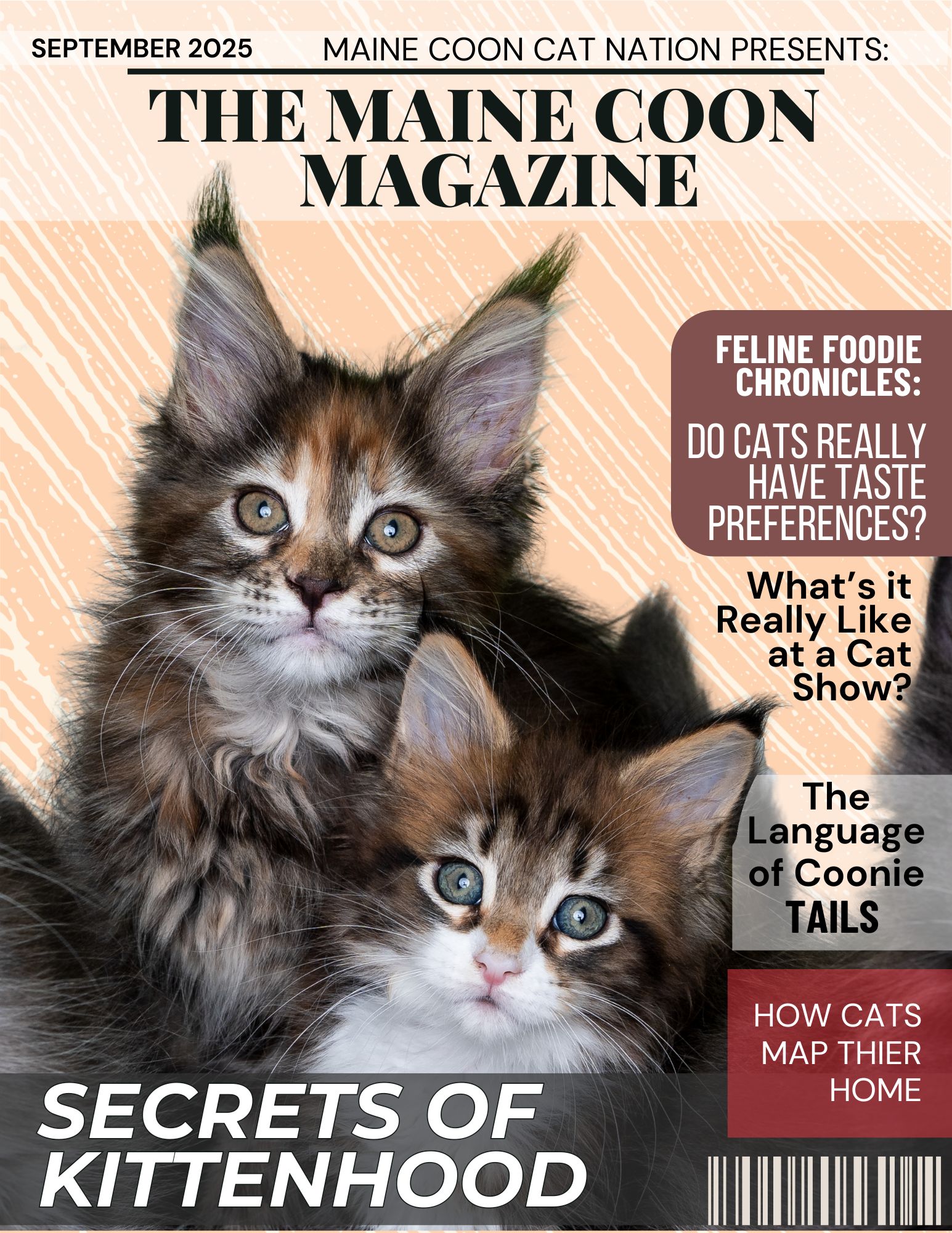- Home
- Behavior Problems
- Cat Bullying Other Cat
Cat Bullying Other Cat
by Lee
(Sarasota FL)
Coonie Attitude
My girl can turn on a dime from the sweetest cat to a horrible monster.
She has bitten, scratched, and attacked our smaller Coonie to the point where it honestly scared me - she was so aggressive in her attack.

I'm not sure why she's doing this. It started maybe several months ago, and we've tried everything - calming pheromones, timeouts, keeping them separated - but it’s like having to babysit two mean toddlers.
Of course, my little one doesn't help much because she thinks she’s really tough, but I'm afraid the big girl is going to hurt her.

She's almost 20 pounds compared to my little 10-pound girl. Is there anything I can do to help them get along better? Thanks
Reply:
Hi Lee,
That sounds really stressful! Cat aggression - especially when it seems to come out of nowhere - can be frustrating and even scary to deal with. While I’m not a behaviorist, I can share some general insights that might help as you sort this out.
Since this started a few months ago, one of the first things I’d consider is whether anything changed around that time.
Cats can be sensitive to even small shifts in their environment - new furniture, different household routines, another cat outside the window, or even changes in your own stress levels.
Sometimes, when you have a cat bullying another cat, the aggressive one isn’t necessarily acting out of malice, but rather stress, fear, or territorial instincts.
The size difference between your two cats is definitely a concern. It’s great that your little one has confidence, but if play fights escalate, it could be dangerous for her.
If you haven’t already, try giving them more vertical space - cat trees, shelves, or even separate window perches - so they can avoid each other when tensions rise. Sometimes, increasing their territory (even indoors) can help reduce conflicts.
You’ve already tried some good methods like pheromones and timeouts. Another thing to consider is reintroducing them gradually, almost like they’re meeting for the first time.
This means giving them separate areas for a little while, swapping bedding so they get used to each other’s scent again, and slowly allowing supervised interactions.
Treat-based positive reinforcement when they’re near each other without issues can also help rebuild trust.
If the aggression seems particularly intense or unpredictable, a vet visit might be a good idea to rule out any medical causes.
Pain or discomfort (even something subtle like arthritis or dental pain) can sometimes make a cat more irritable than usual.
Sometimes, what looks like a cat bullying another cat is actually a reaction to underlying pain or discomfort.
I know how exhausting it can be to play referee between two feuding cats.
Hopefully, with some patience and adjustments, they can get back to a peaceful coexistence!
We’d love to hear how things go - keep us posted!
Best,
Carrie
More About Cat Bullying: Causes, Signs, and Solutions
Why Is My Cat Bullying My Other Cat?
If one cat is consistently aggressive toward another, there’s usually an underlying reason. Some of the most common causes include:
- Territorial Behavior: Cats are naturally territorial, and some are more prone to guarding resources like food, litter boxes, or favorite resting spots.
- Redirected Aggression: If a cat gets agitated by something (like seeing another animal outside), they may take it out on a housemate.
- Play Aggression: Rough play can escalate, especially if one cat is much larger or more dominant. Some cats never learned proper play boundaries.
- Stress or Anxiety: Changes in the home, new pets, visitors, or even rearranged furniture can cause stress that leads to aggression.
- Medical Issues: Pain or discomfort (arthritis, dental problems, or illness) can make a cat more irritable and prone to lashing out.
Identifying the root cause is the first step in stopping the behavior.
Signs of Bullying vs. Normal Play
Not all rough interactions are true bullying. Here’s how to tell the difference:
✅ Normal Play
- Takes turns being the chaser and the chased
- No excessive hissing, growling, or screaming
- No injuries (scratches, bites, fur loss)
- Ends naturally without one cat running away in fear
🚫 Bullying or Aggression
- One cat always initiates and the other always runs or hides
- Frequent hissing, growling, pinned ears, or puffy tails
- Cornering or stalking the other cat, preventing access to food/litter
- Scratches, bite wounds, or fur tufts left behind after fights
If interactions seem one-sided or cause distress, intervention is needed.
How to Stop One Cat From Bullying Another
If your cat is bullying your other cat, try these steps to restore peace:
- Increase Vertical Space: Cat trees, shelves, or high perches allow them to avoid each other when needed.
- Provide Multiple Resources: Separate food bowls, water stations, and litter boxes prevent competition.
- Use Scent Swapping: Rub each cat with a towel, then swap them to help them get used to each other’s scent.
- Reintroduce Slowly: If aggression is severe, separate them and reintroduce using gradual, positive interactions.
- Interactive Play: Daily play sessions (especially with the aggressive cat) help release energy in a positive way.
- Calming Aids: Pheromone diffusers, calming collars, or vet-approved supplements may help reduce stress.
- Consult a Vet or Behaviorist: If aggression persists, a professional can help pinpoint triggers and suggest tailored solutions.
Leave a Comment:
Have you dealt with one cat bullying another? What worked (or didn’t work) for you? Every cat household is different, and sometimes the best advice comes from fellow cat lovers who’ve been through it.
Struggling with a dominant cat who won't back down? You're not alone. Natalie's story about sibling aggression shows how even tightly bonded cats can drift apart - and how structured play and patience helped turn things around.
Drop your experiences, tips, or questions in the comments below - what has helped bring peace to your multi-cat home?

